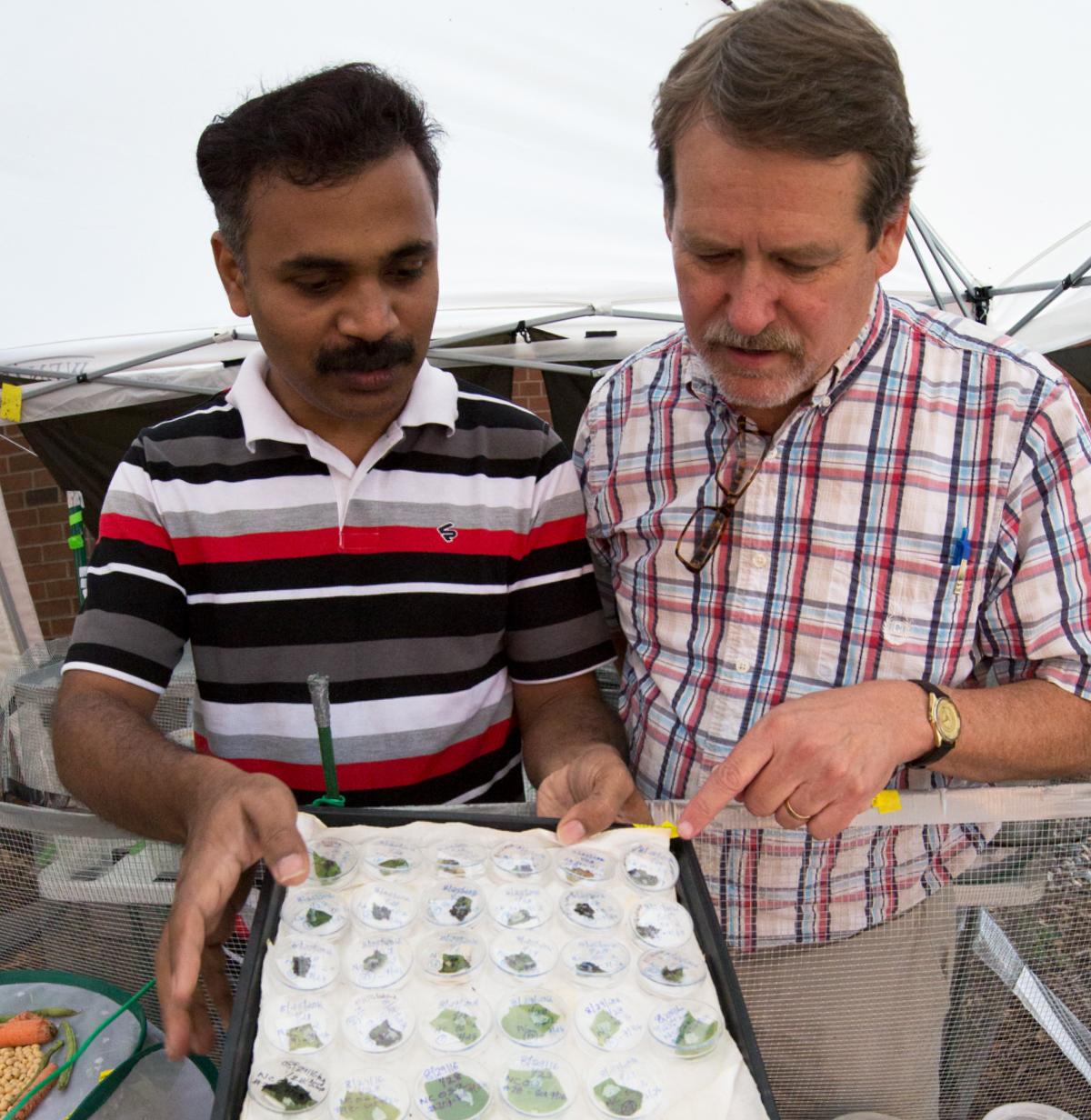
Dr. Byju Govindan (left) is part of an MITPPC-funded team, led by Extension entomologist Bill Hutchison (right), working on the early detection, forecasting and management of the invasive brown marmorated stink bug.
What is the brown marmorated stink bug, and where is it found?
The brown marmorated stink bug (BMSB) is a non-native sucking insect pest with more than 170 host plant species – apples, corn, grapes, soybeans and more. BMSB was first detected here in Minnesota in 2010.
The insect is consistently detected from early spring to late fall, with most growing populations confined to the seven-county metro region. BMSB benefits from global warming and the "urban heat island" effect that causes warmer winter temperatures in more heavily developed areas like the Twin Cities. Because of the wide range of plants they can feed on, a lack of natural enemies and the insect's hardy ability to survive the cold, populations continue to grow and expand to new areas of Minnesota and the Midwest.
Why is the brown marmorated stink bug a problem?
BMSB feeds voraciously on many important field crops, fruits and vegetables, sometimes to the point of total crop loss. Infestations in our area have so far stayed below economically damaging levels, but this pest is an emerging threat to the state's agricultural industries.